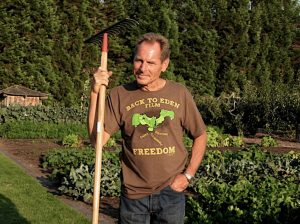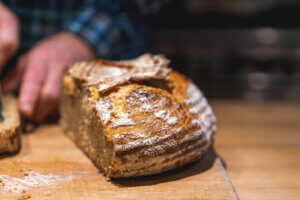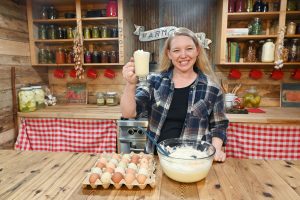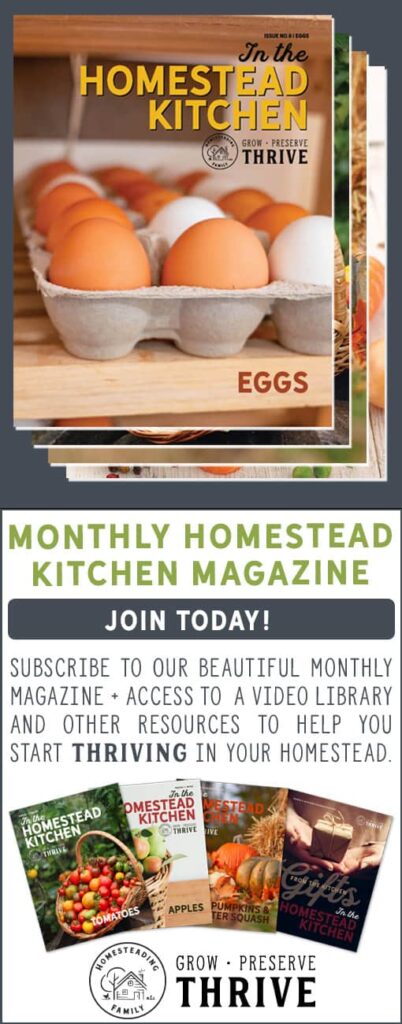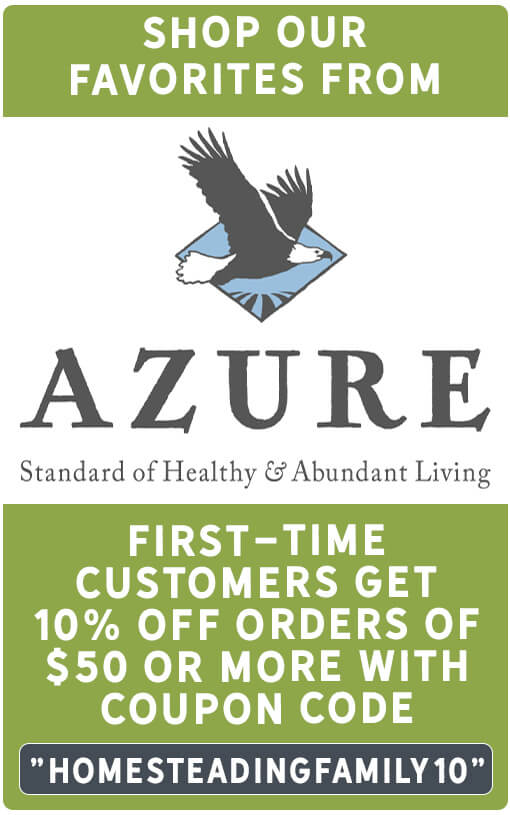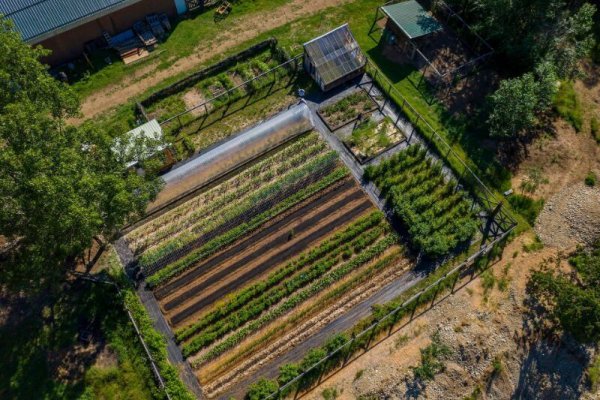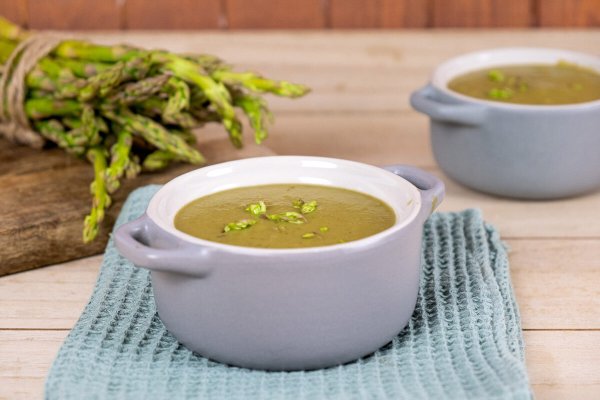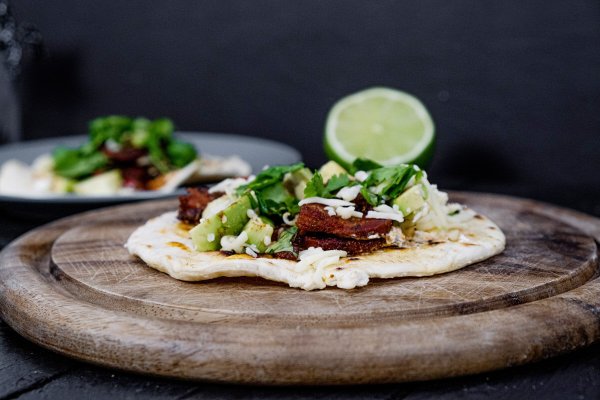Well, we’re not in the pantry this week, but we’re still here to answer your questions! We’ve taken to the comments section on our past YouTube videos to answer your questions!
In This Episode:
- We’re still wrapping up all the odds and ends on the homestead, preparing for winter to settle in.
- Carolyn is continuing her experiment with finding a sustainable oil source. This year she grew sunflowers specifically known for their oil production and she’ll begin pressing the seeds for oil soon.
- It is not necessary to compost meat for quality compost. We say, “add it if you have it.” You can read why and how we compost our meat here.
- Whether or not we recommend reusing the lime solution when water-glassing eggs. Including our favorite uses for that leftover lime water.
- Building soil and our opinion on using hay for mulch. Learn Josh’s easy method for making compost here.
- Storing lard in the freezer and how to properly freeze in glass jars. Also, whether you can render pig fat that’s been stored in the freezer for a year. Learn how to render lard here.
- Making ghee from your homemade butter?
- Our Black Jersey-Fresian dairy cow and why we chose that breed.
- Making and using bone or blood meal for chicken feed, fertilizer or compost.
- Making fermented limes and safely adding more limes during the fermentation process.
- How we store and stock up for a year’s worth of animal feed.
Josh: Hey, you guys. It's Josh.
Carolyn: And Carolyn.
Josh: The Homesteading Family, and welcome to this week's episode of The Pantry Chat- Food for Thought.
Carolyn: Today, we are talking about all sorts of things. We're covering your questions. And you can tell we're a little tired, we're a little punchy. We've had a long harvest season, it feels like, and a lot of good hard work this fall, getting lots of stuff ready for winter. So we're feeling a little punchy this morning, but we're going to be answering your questions that have come in, in different places.
Josh: We're talking about meat in the compost, water glassing eggs today, prepping the homestead for winter, making lard, butter. You guys have got some great questions here. A lot of pantry-type stuff, which is a good thing to be thinking about right now.
Carolyn: Yeah, lots of fun stuff. So, good.
Josh: But first, what are you up to? What's your days looking like right now?
Carolyn: Well, it is officially the change in the season. We are now out of the garden. We've got a few fall, winter greens still hanging in. We're harvesting some spinach tonight. But we're expecting snow this week.
Josh: You have some char, too. Don't you have some char on the row?
Carolyn: We have char. We have kale.
Josh: The hoops on the terraces?
Carolyn: No, no char under the hoops, but we do have lots of kinds of winter lettuces and mustard green and snow.
Josh: Stuff.
Carolyn: Yeah, green wave mustard.
Josh: It's November here and we're harvesting in North Idaho and we're harvesting greens.
Carolyn: Yeah.
Josh: You can do this.
Carolyn: Yeah.
Josh: Yeah.
Carolyn: Absolutely. So anyways, because of that change though, we're mostly indoors and we're full steam ahead on homeschool and so that's really, we're getting a lot done in those books. But then there's the things that kind of all came in right at the end of the harvest. Apples, apple cider. We've been canning apple cider this week.
Josh: Yeah.
Carolyn: We've got cabbages getting turned into sauerkraut right now. So we've got a lot of things going on that's just kind of the trickle in from the harvest. And then we're going to have to turn our attention a little bit to just getting everything a bit organized because with everything coming in so fast sometimes it gets to be a bit of a mess. So we need a really solid kitchen scrub down, clean like deep cleaning after all the preserving that's happened in there. And the pantry needs a real good organization. And hey, I should do, I haven't done a video on what's in the pantry this year.
Josh: Yeah.
Carolyn: Really good. I should do that real soon here so I can take you guys on a tour. Maybe I'll wait until it's like I can walk through the pantry because we've picked it up enough that I can share it with you.
Josh: Well it's kind of cool cause the pantry's you, you've focused on some different things this year and it is looking a little, it's full but looking a little different. Yeah.
Carolyn: Yeah it is. So I'll film the video for you guys coming up here, a pantry tour, so.
Josh: Very cool.
Carolyn: So yeah, that's a lot of what we've been up to on my side. What about you?
Josh: A lot of the same, helping get some of those you've crops in and potatoes and root crops and so those potatoes are curing down in the basement and onions we had curing in the barn, those just weren't quite curing anymore, just got cool down.
Carolyn: Really late onions that we brought in. They were the last of them because most of our are well cured and tucked away.
Josh: Which in there the white onions, which is really strange that those went so late. But we let the onions go until they start to fall down when you start to get that natural process of them breaking. And.
Carolyn: This year the white onions just didn't want to do it.
Josh: Onions they just held on so we rolled with it and they're nice, they're big, nice looking onions. But anyways, they're curing also. So we had to get those out of the barn because we're doing the same thing in the barn. We're tidying up, getting things ready to bring in a load of shavings that we can get under roof out of the snow this year instead of shoveling the snow off of the tarp and getting the shavings, which we use for carbon. The estrone skeleton would say the carbonation diaper in the barn adding lots of carbon. That's how you keep your barn clean and build composer in the winter doing some deep bedding. So we're getting ready for that. Every year we step forward. So this year we're going to get the cracked corn and we're going to just layer that in. Chickens are going to help us take care of the barn and keep it even and break some of that down. But then the pigs will go in there in the spring and root it up and compost it, so.
Carolyn: Now we have a Kunekunes and they're theoretically fairly non-breeding.
Josh: They will not be doing that job.
Carolyn: They will not be doing that right.
Josh: But they are slow growers and we're figuring them out. And so there's still a place for a couple of good bacon pigs way I'm going to term it because the are good fat pigs, which we wanted large pigs, we wanted not ringing pigs. They're a good fit for what we want to do for breeding. But I think we'll still probably bring in a couple of rooting pigs each year and put them to work to help us compost and manage the barn. And we can still get some nice slabs of bacon that aren't, you know traditional, bacon is very fatty, it's very big. We're not used to that today. But overall bacon is actually a slab of fat with little bit of meat in it. And we're going to get that. We haven't butchered the Kunes yet, we're going to be doing that in a few weeks.
So it'll be interesting to see how that turns out. And I think that's going to be a little more traditional bacon. But I like my bacon with meat in it. And so I realized I think we still want to keep a couple of those pigs going. Anyway, so we're doing the same thing, just getting the property ready. We got the barn addition roof on just in time before the weather came in because we've got all our hay and our feed stored. But that just, that's just some nice improvements in systems. So we're kind of sweeping up from all the projects and getting ready to get tucked in because the rain is here and it looks like it's just going to turn to snow without even a break in the weather, it's looking, starting out coming in like a lion. So it'll be interesting to see how it goes.
Carolyn: Yeah, definitely. Well, and we've got some people out hunting, it's hunting season.
Josh: We've got people out elk hunting today.
Carolyn: So the boys are out.
Josh: I want to be out elk hunting.
Carolyn: I got you stuck right here.
Josh: It's good to be here, but got so much to do. I'm glad those guys can get out and go. Because we could use, we're a little light on beef, a little light on a few things this year and so we can use a little extra meat from the wild.
Carolyn: There you go.
Josh: Yeah.
Carolyn: Good.
Josh: Yeah.
Carolyn: All right.
Josh: So that's happening here. Just rolling along.
Carolyn: That's exciting stuff. Now there was one project that I meant to keep you guys updated on and I kind of missed a beat there. And that was my oil sunflowers. I've been talking about this. Is there an experiment this year I've bought an oil press because I'm working on ways to get an actual oil, like a salad oil.
Josh: Okay.
Carolyn: Into production. We do a great job producing lard, producing butter, but I really don't want melted lard on my salads if I can't get olive oil for some reason.
Josh: Not salad.
Carolyn: That is not salad.
Josh: So there's a lot of good places for lard.
Carolyn: And that's not on the salad.
Josh: There's not selling one of them.
Carolyn: And so that's a place you really do want a good oil. And I know where there's a lot anti-seeded oils, which is appropriate when you're store buying it. But I think if they're very, very fresh seed oils, they can be great for limited amounts of use in a salad. And so all of my, I claim it, black oil seed sunflowers and we harvested those are just drying down a little bit more in the kitchen and then we'll be getting ready to do a trial run on the oil press.
Josh: All right.
Carolyn: So anyways.
Josh: That's exciting. That's just a whole nother little cool thing that you came up with and that I've never even thought of doing on the homestead. But being able to make our own oil like that.
Carolyn: It becomes really very.
Josh: And sunflowers are easy to grow. I don't know, it would be interesting to see how the process goes of harvesting and getting them all converted into oil. But most places sunflowers are grow pretty well. So you can grow a lot of them that that's a really good resource.
Carolyn: Yeah, it really is.
Josh: If this whole process turns out good.
Carolyn: So we'll see. We'll see how it goes.
Josh: Hey, and if you're wondering why the shiny grayish, whatever background today we are actually in town, we're in the office, we have some of the Homesteading family team members in town today because they live on their places all over the country. And so we got a few people in and we're planning for 2023 and looking at what we're going to be doing and what we're going to be adding or focusing on. So anyways, we're in the office today and this is our little cave in an old bank vault. So it's actually all concrete bank vault we're in. So it's kind of cool. It's a little rustic.
Carolyn: It is.
Josh: But anyway, so we're not in the pantry, we're in the concrete bunker.
Carolyn: But if you guys have ever written in to [email protected], you may have talked to Robin or to Kelly if you've ever done a video interview. For those of you guys who are students inside any of our classes, you may have talked to Annie and they're here with us getting to hang out. So that's a lot of fun to get to have everybody in person and get to visit with them. But we are jumping into questions today so you better jump right in because I actually have inside the membership this morning, I have a live video with Mary from Mary's Nest coming over to talk about this.
Josh: Very cool.
Carolyn: Sorts of things. So anyways, I have to make it to that so we don't have a lot of time.
Josh: Good. Well.
Carolyn: Let's dive in.
Josh: Move along here. Okay. I think the first one's your read.
Carolyn: Okay, Henaco on meat in your compost video. If you don't harvest animals, would you suggest buying offal to add to your compost or just add it if you have it kind of thing?
Josh: Yeah, I think that's kind of a cool question and appreciate your thinking if you're, you're not raising animals, you don't have that resource and it is not at all a necessity for composting. And I did that video more to show what you can do with your extra resources. Because a lot of times we're paying somebody if we do have animals on the property and we're butchering or even if we were butchering our ourselves, a lot of people aren't really thinking about it and you're paying the haul it away or you're burying it in a hole somewhere. And so it is more to show what can be done and it's a good use of resource and you definitely can. So do you need to go buy offal or anything? No, not, no, you don't.
Hopefully you've got some green manure. There's a lot of good argument that green manure added your compost, the biology that adds, makes a better compost all the way through. But that's a very nuanced discussion within just composting and so I like to recommend that. But I like that. Just add it if you have it kind of thing. I like that perspective of work with what you have accessible to you, compost with what you can get inexpensively good. You want good, clean, hopefully organic type materials, but use what you have and if you can get access to these things, then great add them in.
Carolyn: Yeah.
Josh: Yeah.
Carolyn: Good.
Josh: Let's see here, Alan. Wow. Okay, sorry, we're working off the computer and my computer is often set to shut down. I'll have to keep it moving. Alan on water glassing eggs. Can I reuse the solution over again and refill the bucket?
Carolyn: So for this we're talking about the lime solution that is used for lining eggs and this is the first year that at this point I have not lined any eggs in years, many, many years. And I should do that. So we have some fresh, some.
Josh: Good backup.
Carolyn: For fried eggs and things like that. Is the chicken start to slow down. But no, you really don't want to reuse the solution. You want to go ahead and pour that out and refill the bucket when you're ready to do a new year of eggs. The lime water in there is great for disinfecting things and especially for ridding areas of pests. It's what they used to use to clean their pantries at the end of the year. And I don't mean the leftovers from the water glassing particularly, I just mean the lime solution. And they would clean that down because it's so antimicrobial and the insects just really don't like it that it helps to kind of sterilize. I want to say that loosely, it's not a technical sterilization, but it really does clean an area and kind of cut the germs way, way back. So to use that solution, you can go pour it around your chicken coop edges, that's a great way it'll cut back the mites or any problems with chicken lice or anything that you might be getting in your chicken coop.
You can scrub areas down with it. If you have an area where you have ant problems or anything like that, you know can just walk around the exterior perimeter of your house and just pour a line of this stuff on down to keep insects and things from coming in that way. So there's a lot that you can do with it, but I would not reuse it another time for eggs. You just don't want it to get to the solution changes as it sits. Either you've losing some water to evaporation or something like that's happening in the process and so it's better just to start fresh.
Josh: Cool, cool, cool.
Carolyn: Good.
Josh: How about that one?
Carolyn: Okay, meaning number three, Prepared Mama on preparing the homestead for winter. One of our last pantry chats.
Josh: Yeah.
Carolyn: Could I cover my dirt in my garden with hay for the winter? I'm in Utah at about 6,800 feet. You just said the word, I'm sorry Mary, no prep Prepared Mama.
Josh: The word?
Carolyn: You said the trigger word for Josh, which is dirt.
Josh: Oh, I was going to overlook that.
Carolyn: You were overlooking.
Josh: I was going to overlook that.
Carolyn: That's very good. That's good.
Josh: Some people have to start with dirt. Hopefully you're building soil, dirt is dead. So that's an inside joke there. But that it is truth, that dirt is dead dirt. Hopefully you don't have dirt for garden soil, but if you do, you just, you're building, you want to turn that dirt into soil. Soil has living organisms in it and that is what is essential. Industrial farming, farm and dirt. They look at dirt is just a structure and then they give all the external synthetic inputs, but we want to build soil. But by mulching, which is essentially what you're talking about there and putting that hay down, you are hopefully converting your dirt to soil. And yes, you can do that with the hay. I recommend be careful about the seed heads that are in it. If it's hay that matured with seed heads in it, you're going to be planting a lot of hay seed in your vegetable garden and you probably don't want that.
So you do have to be careful with that on hay. Otherwise, it's a good mulch. So if it was harvested at the right time, that is great. Now if you're mulching like that and you are dealing with, well you should be amending your soil no matter what anyways every year. So put down some compost if you are gardening on dirt and really needing to build it up, put down a lot of compost in any amendments and then mulch and as much as you can put on six to eight inches. But if you've got two or three inches worth, that's better than nothing. And certainly a great way to put that garden to bed for the winter. I should really change this bit. We're good.
Carolyn: So I know straw has a lot of concerns about chemicals in it and I do believe hay has quite a few.
Josh: Hay does. And this is becoming a bigger and bigger challenge. We're finding that more and more of these broadleaf herbicides are getting sprayed and the hay, the grasses can survive it. But broad leaf vegetables can't, which most of what we're growing in the garden are considered broad leaf vegetables. And so you do need to really, really be careful with your hay in that case and make sure that it is not sprayed. It doesn't have to be organic, but it needs to be not sprayed.
So with anything you got to know your source and you got to know what they're trustworthy. A lot of people say, yeah, yeah, yeah, no it's not sprayed. You got to have confidence in that and so hopefully you've got a good referral or your hay farmer or you can pull some references or something to verify that a little bit. So glad you brought that out because that is becoming more and more of a problem for people. It really just depends on the region that you live in. But if you're just buying it, if you're buying hay to mulch with one, that's a little expensive way to mulch. But if that's what you can do, great. Just know the source. Make sure somebody can confirm to you that has not been sprayed with any of the broad leaf herbicides.
Carolyn: There you go.
Josh: Okay, let's see here. Moving on Deborah Scott, on a whole year's worth of lard in one day. I love it when we get have a day like that where you just get so much stuff.
Carolyn: Oh, so much stuff. Yeah.
Josh: Yeah. Very Cool.
Carolyn: Yeah, it's fun.
Josh: Yeah, it's a good use of time. Did I understand you're putting some jars into the freezer, this is jars of lard. Is she understanding correctly she put some jars into the freezer and will they not burst?
Carolyn: Great question. I've had the hardest time for a long time with jar breakage in the freezer and then I finally just took a little bit of time to think about it and understand what's going on. It kind of comes down to jar anatomy. So you can very successfully freeze with glass including mason jars, canning jars of all type. You just have to think about the way that something expands when it's in the freezer. So just assume expansion is going to happen. The thing is that jars have a nice curvy shape up at the top. If you go buy jars that are specifically for freezer like freezer jams or things like that, they're always totally straight. And this is the key is because if you're taking your regular mouth jars and they have that nice show sloping shoulder neck there, kind of that bell at the top, you've got to make sure you count your head spaced as starting at the beginning of that curve.
So you want to make sure that you don't have any food about an inch below, above an inch below that curve, if that makes any sense at all. You got to make sure you just stay well away from the curve in the jar because that's where, as your food expands, if it's already up to the level of those shoulders there as it expands, it doesn't really have anywhere to go even though technically there's jar space at the top. As it gets more and more frozen, it's more and more of a solid force pushing up into that glass and that's where you're going to get your cracking.
So just make sure when you're thinking about head space for freezer foods, that's every bit as important as it is for canned goods for if you're going to storm on your shelf but you count the top of the jar as wherever the curve starts, not the actual rim of the jar. Once you do that, then yes, you can freeze in those jars, you can freeze broth, you can freeze lard, you can freeze jams, you can freeze all sorts of things in there and you won't have a problem. Alternately get a completely straight sighted jar, which would be like a wide mouth pint would be generally most wide mouth pints you can buy. It's completely straight right up through the neck and up to the rim.
Josh: Cool.
Carolyn: Yeah.
Josh: Very cool. Those are some good tips right there. I like it.
Carolyn: Hard one once you've cleaned glass and melting stuff on the freezer.
Josh: No good. Let's see here. Bonnie Mosley on how to make butter three different ways. Can you make Ghee from your homemade butter? And you might want to.
Carolyn: Absolutely.
Josh: Let some people know what Ghee is, lot people aren't familiar with that.
Carolyn: So Ghee is the shelf-stable form of butter and that's where you're removing all the dairy proteins out of the butter. So when you have lard and you render your lard, you are removing all of the meat proteins, all pretty much all the proteins out of the fat in the lard. Same thing with hallow because those don't store well. They can't be shelf stable like that. They don't handle heat well. Those proteins, they start to go bad. That's where the bacteria lives is in stuff like that.
And so making Ghee is essentially just rendering your butter. It's where you're melting it down and you're pulling off all of the dairy solids, all the milk solids out of your butter and leaving just pure butter fat. And that makes the butter shelf stable for long periods of time. It does a lot of different things to them. It helps people in places where it's very hot and they don't have great refrigeration. Ghee is a very, very common food fat to be cooking with and it's just a clarified butter that has had all the solids removed out of it and all of the milk protein. So yes, you can absolutely do that.
Josh: Very cool. Okay, here's another one on how to make butter three different ways but more of a farm question. Gretchen Sharp on how to make butter three different ways. May I ask what kind of cows you all have? When I was young, my family had both Holsteins and Jerseys and the cream from the Jerseys was as thick as cream cheese. I think that's a cool question cause we kind of tie into there a little bit on what kind of cows we have.
Carolyn: Yeah, absolutely. Well we have both beef cows and we have dairy cows, but I think you're specifically asking about dairy cows in this question. And we have something that's kind of locally known as a black Jersey. She's our second black Jersey and that is a Frisian Jersey mix and a Friesian is kind of the heirloom version of a Holstein. So we had two of them and they've both been phenomenal cows to get the nice thick cream on the top.
Josh: Yeah, they've been our favorite cows over a half dozen or more cows we've had over the last 15 years. And they do, they produce a little bit more very, very good producer, but we still get a very good cream line and they're not as high maintenance. They don't take as much feed maintenance as say a large Swiss.
Carolyn: Yeah.
Josh: Cow does, or even some of the Curtsies.
Carolyn: Yeah.
Josh: So we really, really like her.
Carolyn: Yeah.
Josh: Let's see. Okay, you want to talk?
Carolyn: Sure. Let's see. Jennifer Coates on getting that pantry full, what you need to know when you stock up says, "Josh, can you please talk about bone and blood meal as chicken feed and as fertilizer? Is it the same stuff? Do you use it?" and Carolyn, "Do you make those things?"
Josh: Yeah, interesting. So we don't use those things for chicken feed, blood meals, essentially just dried blood and it's going to be high nitrogen so it is good for fertilizer and the bone meal, likewise, if that was powdered, that's high. I think it's high phosphorous going by memory here along. And both of them have minerals in them, so they're good fertilizers. What we do, just because we raise and process so many animals as they go into the compost pilot we were talking about earlier, they just generally go in there. And so essentially we're using them, we're just composting them as opposed to breaking them down individually, drying them and whatnot.
So we take all the blood, some of the bones be reuse a lot of the bones other places first. Eventually they make it to the compost pile one way or the other. And so that's what we do. But you could, I've actually thought about blood meal, you can dry, some people will take it and take that blood from butchering and dry it out and use it to sprinkle. Other people will take it and mix it with water and then actually just pour it into the soil.
Carolyn: It's one to 10 part to water it down.
Josh: Yep.
Carolyn: 10 Parts water.
Josh: One to 10 ratio. The bones are a little tougher to crack. I've always thought. And if I had the time, I would look into actually something that you could break the bones down and crack them and pulverized them to make a powder if you wanted to specifically have them for supplements instead of just going in the compos. So you can definitely do all that stuff. It's just there's work and processes to do that but they are valuable.
Carolyn: Well and as for the chicken feed part of that question, no we don't use them for chicken feed. What we do, like Josh is saying, we get them in the compost which goes in the garden and then the chickens get a lot of the leftovers from the garden and it kind of creates this cycle where they're getting more the vegetative matter that has been grown using these things in the compost.
Josh: You know and there's so many different ways to use things and you have to figure out what works best on your farm with the resources. As we're trying to create these loops, we're recycling and getting even multiple uses of things. So we'll talking about bones, we'll eat the meat off the bones which will been cooked and then they'll maybe get made broth out of them, and then maybe they'll go to the dogs and the dogs kind of finish them off, and then maybe they'll go to the compost pile. But you try to find those loops where everything goes back in and is returning and nature's really built to do that if we can use it. And so sometimes there's a lot of cool ideas like taking the time to make blood meal, but is it worth your time I guess. And you have to look at your own situation and figure that out.
Now you might have resources to a butcher shop in some of those things and you don't have a lot of space, but you want some amendments for your garden then that could be a great resource and a great thing to do to create a nitrogen supplement or different things like that. So just take those things and doesn't matter whether we do it or not and know that how do you apply the resources you have access to make something work and make a good recycling loop and using something multiple times those types of thinking with the resources you have is what's really important to do.
Carolyn: Yeah.
Josh: I think in this life that we're all trying to live, let's see here, Steven L on, I never had limes when I needed them until now.
Carolyn: So that's a video on the whole fermenting whole limes as in citrus where we've been talking about the chemical lime or lime, what do you call that? Is that an element? Is that a chemical lime? Powdered lime?
Josh: Powdered lime. It's a mineral.
Carolyn: There we go.
Josh: That's what, well its mineral elements. It's usually calcium you some ratio of calcium and magnesium is the predominant in well lime, not in the fruit lime.
Carolyn: Yeah, right. So we're talking about fermenting citrus limes here and his question is.
Josh: Can you keep topping up with new limes?
Carolyn: For about two weeks? I find that you can do that while you're still in active ferments. While you're seeing bubbling and you're seeing a change, you can go ahead and add new limes in there. You do have to make sure to add new brian to the top to make sure they're all submerged. But after that period, you really don't want to just stick new limes in there because the active ferment has died down and when it's fresh and it's really active, all that bacteria is in there hunting out all the bad bacteria. It literally becomes a scavenger and goes and finds and attacks all the bad bacteria, the yeast, anything else that gets into there after it dies down though it's not so powerful of ferment as far as the bacterial activity, it's still got all the great health benefits going for you, but it doesn't quite have the ability to attack of invaders in the same way, if I can put it that way.
So if you draw a fresh lime in there and let's say it's got a little bit of something on it, even if you washed it might still have a little something in there. Past that active ferment time, you may be just introducing some bad bacteria that then is going to take over and ruin your whole batch. But while it's actively fermenting, you can stick something in there and it will be quite cleaned off of anything bad very quickly during that act ferment, so.
Let's see. Char Organic on getting that pantry full, what you need to know when you stock up, how are you storing your feed?
Josh: And we're talking about getting the pantry full, but I assume this is, we were talk, trying to remember in that video, were we talking about storing feed is what outdoor feed. That's what we're talking about?
Carolyn: I think she, she's referring to animal feed and not people feed.
Josh: I think so too, but it, that's context. Was the pantry full? So we're going to assume you're talking about animal feed, which is not in our pantry but is up in the barn. And so I guess you could say we have a giant pantry in the barn and we just store it open. We don't have a lot of issues to deal with here. It's not so humid that we're always fighting some of the moths and some of the larva and things that can hatch and feed. So we're not dealing with that. We actually talked about that a little bit on the last pantry chat one or two ago. We talked a little bit about right on dealing with that situation. We also have a lot of barn caps, so we keep very intentionally so they keep the mice and the critters out the feed and we buy in bulk and because we're a little larger, we buy it thousand-pound totes as opposed to bags.
But we've bought in 50 pound bags and just stored them in a dry cool place and dry is the key thing there. And so for us, that's all out in the barn close to where we're going to use it in the winter we get a lot of snow. So we actually did a barn edition this year to make more room to store things so that we could bulk up a little bit better and also not be tripping. We had so much crammed into the barn it was hard to get around them.
But dry cool is good and dark is good. Direct sunlight, definitely just like it deteriorates things in the pantry if it had, it does deteriorate hay or grain if you're getting hot sun beating down on it. So I won't say dark because you're just not going to create a dark room. But if you can protect it from direct sunlight as well, that is a good thing.
Carolyn: Very good.
Josh: Alrighty. And Holly Ann on render your own lard. My son has pig fat from January, 2021. If I render it today in October, 2022, will it be good for a year if properly stored? Good. Nice details in that question. I like it.
Carolyn: Now I'm assuming that the pig fat that your son has from January of 21 has been stored well wrapped in the freezer.
Josh: Yeah, that's going to be really important.
Carolyn: Big piece to that. So if you're not an issue at freezer burn or things like that going on, then yes you can go ahead and render it. And the rendering process is really what's going to determine your shelf stableness for the next year. For the actual lard, it's really important that you're getting all that moisture out. That's like key. I know I probably say it like 20 times in the video, but make sure you're removing all of the moisture from your lard. That's why you simmer it until you stop getting the big bubbles. Because the big bubbles are the water evaporating out, the liquid coming out. And when you get hot enough, you guys all know you go to deep fry something until you put the food in that that fat is hot, but it is not boiling. As soon as you put something in with any moisture, that's where all those bubbles erupt.
And so you need to get to that state where you don't have moisture in there. The trick with lard is doing that without overcooking your lards, you have to just low and slow, low and slow just keeping patient. But as soon as you've got those bubbles all out of there, then you're ready to store it. So that's really going to handle how long it stores for. On the other side, assuming that your fat is good to start with, so no freezer burn and obviously it couldn't have been sitting out somewhere. If it was, you wouldn't, it'd be so nasty you couldn't even get close to it. It would be putrid.
Josh: That's a long time in the freezer. I mean you're talking a year and three quarters of another year, so hopefully that was wrapped really well.
Carolyn: Right.
Josh: And just, yeah, be sure and in a deep freezer, not your regular freezer, things don't keep well that long in a regular freezer, like a chest freezer and upright deep freezer. Hopefully it was there. And again, like Carolyn mentioned, wrapped very well.
Carolyn: Yeah.
Josh: You just don't really want to mess with that. If it wasn't.
Carolyn: Now if you look at it and you feel like there is freezer burn on it, while it may not make great food, lard, there are a lot of uses for around the.
Josh: Oh, conditioning, leather, wood handle tools. Cutting. Well now you even do cutting boards, but.
Carolyn: I'd do cutting
Josh: But I mean with the older lard.
Carolyn: No, no, you're right.
Josh: Yeah.
Carolyn: Not with the older one, but oiling things of any sort is a great use for that. So don't count it as unusable and needs to go to the trash, even if it's beyond food grade. It just, you need to make a differentiation between food grade and non-food grade.
Josh: Label it accordingly.
Carolyn: Yeah, right.
Josh: Very cool. Well, I know you've got to get on here and meeting with Mary from Mary's Nest in a moment. So it's been great hanging out with you guys and hopefully your gardens are wrapping up and you're using in to fall here with full of comfy pantries.
Carolyn: That sounds good. That's a good feeling this year, huh?
Josh: All right, see you soon.
Carolyn: Take care. Goodbye.
Sign up to receive email updates
Enter your name and email address below and I'll send you periodic updates about the podcast.



